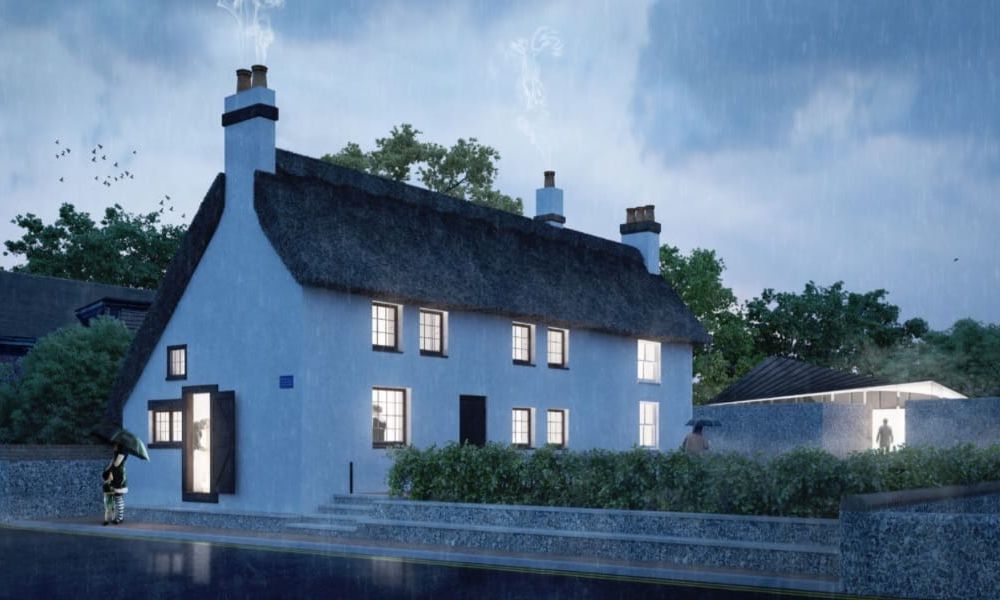A rendering of the plans for the restored cottage, which William Blake and Catherine Boucher rented for three years from 1800
Photo: Blake House Trust
Plans to turn a picturesque cottage once inhabited by the artist and poet William Blake into a museum are a step closer after funding was sourced to fix its thatched roof, which was at risk of collapse. Blake lived in the house, in Sussex, UK, with his wife Catherine Boucher for three years, during which time he created works such as his famous poem Jerusalem.
The cottage, in the village of Felpham, was purchased from private owners by the Blake Cottage Trust in 2015. It has, however, over the past decade fallen into disrepair—with the issues with the roof accompanied by rotting rafters and crumbling walls, according to The Sunday Telegraph.
This week, it was announced that £55,000 has been raised from World Monuments Fund Britain, as well as fellow grant-giving organisations Foyle Foundation and Foulerton Charitable Trust, to cover the work on the roof. The work is part of a broader plan to restore the building and open it to the public.
The cottage as it is today, with the roof repairs taking place
Photo: Blake Cottage Trust
This work, overseen by a board of trustees appointed in early 2024, will take place in stages, according to the Blake Cottage Trust. First the fabric of the building will be secured, then the cottage and garden will be returned to “what it would have been like in Blake's time”. Later, the hope is to create a new building on the grounds that will serve as “the only centre dedicated to the Blakes' lives, work and legacy.” The estimated cost of the entire project is £4m.
Blake was a prolific artist who, while under-recognised in his lifetime, has been celebrated more recently for his idiosyncratic, allegorical creations. A Romantic in style, he regularly drew on philosophical, mythological and religious themes as a means of responding to contemporary society. A sweeping survey at Tate Britain in 2019 featured some of his most famous pieces, such as Isaac Newton (around 1795), while also bringing to life his personal story—for example, recreating the room in which he held his disastrous solo show of 1809.
He was perhaps even better known as a poet, and it was at the cottage in Felpham that he began Milton, his epic poem in which Jerusalem is featured. Jerusalem was later transformed into an unofficial English national anthem.
Doug Nicholls, the chair of the Blake Cottage Trust, tells the The Art Newspaper: “William Blake remains one of the most influential poets, philosophers, artists and printers in the world. He inspires tens of thousands still. We aim to preserve his remaining cottage in Felpham and transform it into an inspirational centre that celebrates all of his art forms and thought and encourages students and artists to create more motivational work. We want the cottage to means something powerful for the full spectrum from primary school students to acclaimed international artists and literary figures.”

